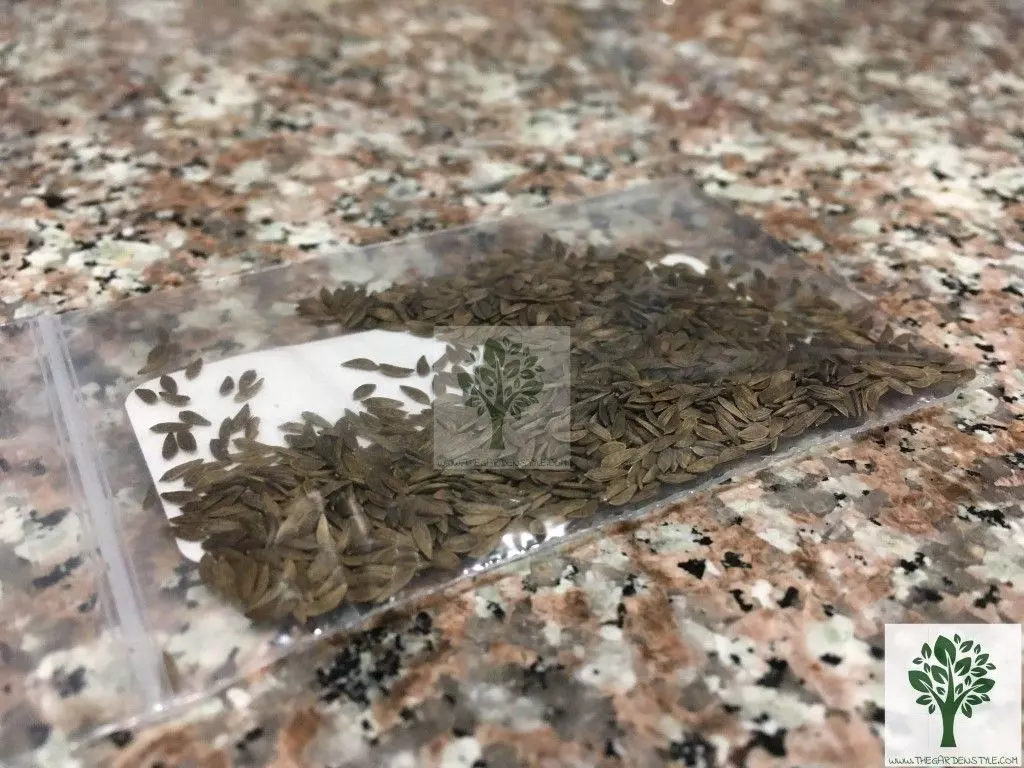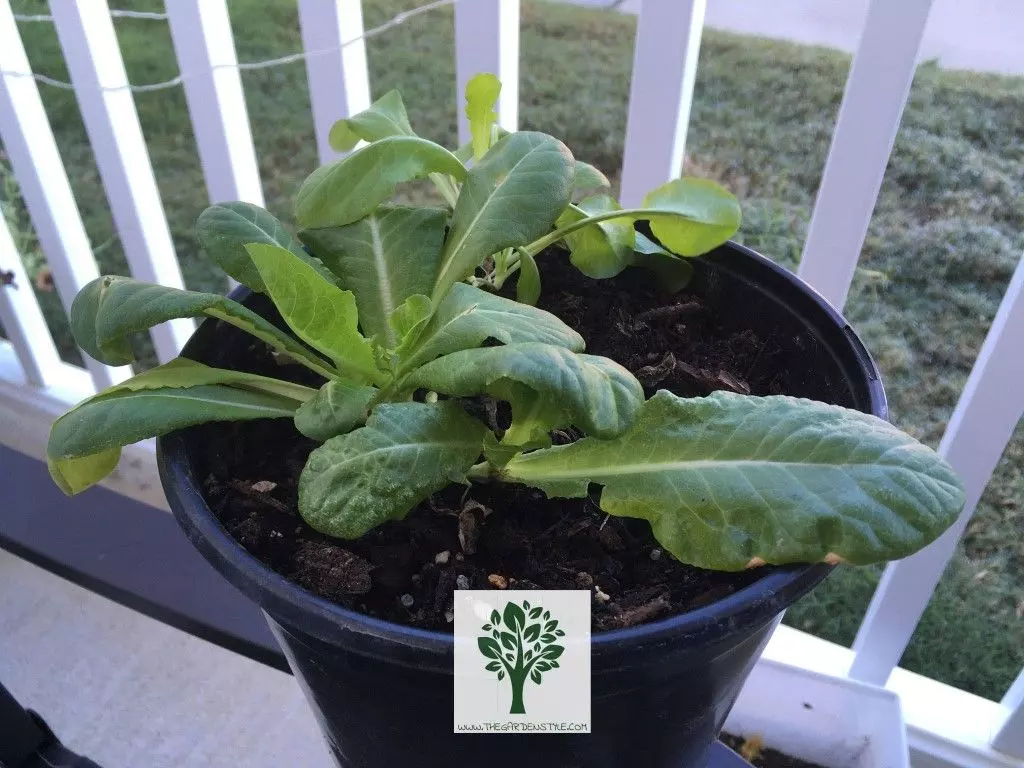Table of Contents
Growing Buttercrunch Lettuce
Growing Buttercrunch Lettuce can be very rewarding, as it always is when our garden fills our soul with delicious and healthy vegetables that we grow with our hands. This plant is tremendously used at a culinary level in most cultures. In this article, we explain how to grow Buttercrunch lettuce from seed easily. Also, learn how to grow Buttercrunch lettuce from scrap.
Buttercrunch lettuce is sought because of its “buttery” flavor and velvety texture. The small, loose heads produce leaves that are both delicate and strong enough to roll into lettuce wraps. Buttercrunch lettuce has soft, green, slightly curly leaves wrapped around a loose inner head of sweet-tasting, bleached inner leaves.
Buttercrunch (Butterhead) lettuce, like most lettuces, does not do well in harsh temperatures, so if you are in a warmer climate, you may have been reluctant to grow this green vegetable. If that is the case, then you have never tried growing Buttercrunch lettuce. It would be very strange if you did not know lettuce.
There are many types of lettuce, but what we should know is that it is a plant that was not so when it was wild. Lettuce, in nature, is usually small and bitter. Humans have adapted it, making it tasty and large.
We are interested in learning how to grow Buttercrunch lettuce because nowadays they are in all supermarkets, but they receive a huge amount of chemicals to reduce pest attacks (such as slugs) or to increase the size and speed with which they grow.
For this reason, and taking into account that due to the variety and harvesting time, we can have Buttercrunch lettuce all year round, we are interested in planting them in our own garden.
Let’s start reviewing the core of this article and answering the questions of our readers, How to Grow Buttercrunch Lettuce, when to plant buttercrunch lettuce, how to harvest buttercrunch lettuce, and when.
How to Grow Buttercrunch Lettuce also known as Butterhead Lettuce from seeds
Butterhead lettuce, also called Buttercrunch lettuce, is a type of lettuce that grows on loose heads with soft folds in the leaves. The color is green or light brown for the outer leaves and yellow for the inner leaves. The texture of the leaves is soft and buttery. Butterhead varieties include Bibb, Buttercrunch, Tania, and Tom Thumb, a miniature type. Learn how to grow Buttercrunch lettuce and harvest fast.
The Buttercrunch lettuce grows best in cold temperatures, between 45 – 65 °F (7 – 18 °C). They can tolerate light frost but not constant cold temperatures, so early spring is the best time to grow Buttercrunch lettuce.
Buttercrunch lettuce days to maturity: The approximate time to harvest Buttercrunch (Butterhead) lettuce is three to four months from planting. Depending on the planting season can take between 60-85 days until the harvest time.
When to Plant Buttercrunch Lettuce
When to Plant Buttercrunch Lettuce – The best time of year to plant buttercrunch lettuce from seeds is from April 1st to May 15th and from September 1st to September 15th (Northern hemisphere).
It is also possible to sow Buttercrunch lettuce seeds during the winter and achieve good development.
When to Plant Buttercrunch Lettuce in Arizona
When to Plant Buttercrunch Lettuce in Arizona – Winter: from September 1st to January 31st.
When to Plant Buttercrunch Lettuce in California
When to Plant Buttercrunch Lettuce in California – Winter: from September 15th to November 15th.
When to Plant Buttercrunch Lettuce in California – Spring: from January 1st to March 31st.
When to Plant Buttercrunch Lettuce in California – Summer: from April 1st to July 31st.
n to Plant Buttercrunch Lettuce in California – Fall: from August 1st to September 30th.

How to Grow Buttercrunch Lettuce
Sowing Buttercrunch Lettuce
Lettuces need to have aerated soil, rich in organic matter and free of weeds. To grow Buttercrunch lettuce we recommend these quality seeds (Order it here).
We will look for soil that is capable of retaining moisture well.
Make shallow parallel trenches with your finger on the ground. Space the trenches 24” (60 cm) apart. Plant the tiny butter lettuce seeds evenly along the trench.
The soil should be well moistened but not soaked. In about 60 to 85 days they will be ready to harvest.
Buttercrunch lettuce is ready to harvest approximately 60-85 days after sowing. Although it tolerates heat better than other lettuces, it should still be planted in early spring or later in the fall season. For a continuous supply of lettuce, plant successive plantings every two weeks. Leaves can be harvested throughout the growing season or the entire plant can be harvested.
Seeds can be sown indoors in your area a few weeks before the last frost. Sow seeds 8 inches apart (20 cm) in partial shade or an eastern exposure area, if possible, infertile soil. Space plants about 10-12 inches (25-30 cm). Distance one foot in between rows.
Although lettuce can be grown directly in the ground, it is best to monitor its growth in seedbeds.
The soil of the seedbed has to be of the best possible quality with 30-40% of organic fertilizer that can come from worm castings, for example.
Sow the seeds at a depth of 0.5 inches or less so that the seedling does not find it difficult to germinate and, as far as possible, the soil should not be compacted.
One of the keys to preventing lettuce from dying and which is important throughout the cycle is that it is always well hydrated. The vegetable does not tolerate a lack of water at all, so watering it with plenty of water (without forming puddles or wetting the leaves too much) is of vital importance.
After sowing, they should be left for four or five days until the first shoots emerge. If frost occurs or the temperature drops too low, they should be covered or placed in a container overnight or for the duration of the low temperatures.
Once the first days of sowing have passed and the sprouts are visible, they should be transplanted into individual seedbeds with the soil of similar quality to the previous one to prevent them from competing with each other for nutrients and water.
Watering should be as in the previous stage, constant.
After 1 or 2 weeks, the lettuces will be ready to be transplanted into a vegetable garden or pot.
Make sure to leave at least 8 inches (20 cm) between them and that the soil is not hard. If possible, add compost.
On very hot days, they mustn’t get direct sunlight, as they can flower and thus finish the growth of the leaves.
Following these tips, in two or three months you can obtain spectacular lettuces to enjoy in all kinds of meals.
We will take advantage of soils in which we have grown other vegetables, such as tomatoes, potatoes, peppers, and carrots.
It is also possible to plant lettuce in pots.

Watering Lettuce
We must know that if we want to grow Buttercrunch lettuce one of the most important points is a large amount of water they require. Mainly when the buds are forming.
The ideal irrigation system is drip irrigation. Buttercrunch lettuce requires constantly moist soil. For what we will water daily and in little quantity. We discard the irrigations that flood the lettuce crop since rotting is more than assured.
In the initial stages, we could use sprinkler irrigation, however, it is not advisable once the lettuce buds are strong and large. This will also cause rotting and attract enemies such as slugs more easily.
Care for Buttercrunch Lettuce
If you want a continuous crop throughout the growing season, you should plant Buttercrunch lettuce every two weeks.
Fertilizing
It is highly recommended to fertilize 3 weeks after repotting it. Buttercrunch lettuce prefers soils with a high humus content, compost, and a constant supply of nitrogen to maintain growth. Products such as organic alfalfa meals or a slow-release organic fertilizer can be used.
An organic fertilizer will help conserve moisture, suppress weeds, and maintain a very cool soil temperature during the warmer months (Order it here).
Watering
Make sure the soil remains moist, as it is moisture-existent, but not waterlogged. Buttercrunch lettuce will usually let you know when it needs water. Just look at it and see if the leaves are a little wilted. Light watering is recommended, even during the day.
How to Grow Buttercrunch Lettuce from Scrap
To grow buttercrunch lettuce from scrap we can take advantage of a purchased, fresh salad lettuce plant.
First, we remove the outer layer of leaves, which can be eaten. Then cut the lettuce 2 inches from the base. Put the base of the buttercrunch lettuce in a container with water and place everything in a room with direct natural light.
After a couple of weeks, both leaves and roots will begin to sprout. Then it is advisable to transplant it to an individual seedbed and continue with its care for cultivation.
Any type of container with holes in the bottom for water drainage can be used for seedbeds.
Association
If you live in a warm area, you should plan for lettuce to be shaded by taller plants, such as tomatoes and sweet corn, especially if you are planning to get lettuce in the summer, as it does not tolerate intense heat.
You might also consider planting rows of chives or garlic between your lettuces to control acidity. These will act as “barrier plants” for the lettuce.
It is beneficial for the crops to plant the following vegetables together with lettuce: celery, eggplant, onion, carrot, tomato, etc.
It is not recommended to plant parsley and lettuce together.
Harvest Buttercrunch Lettuce
How to harvest Buttercrunch lettuce. Buttercrunch lettuce should be harvested from our garden after approximately 60 days. However, depending on the season it was planted and the plant hardiness zone may take longer.
How to harvest Buttercrunch lettuce. The good thing about lettuce is that after being harvested, it grows back repeatedly. The important thing is NOT to cut the main stem. You must keep this without being harvested since this would practically kill our lettuce.
How to harvest Buttercrunch lettuce. You should cut and harvest the secondary lettuce stems, not the main stem.
Planting lettuce is relatively simple. The important thing is to provide them with continuous irrigation, ensure that the soil is rich in humus, and prevent their enemies from approaching.
We must also eliminate the weeds that appear around them as a result of having moist and constant soil. For it, we will use a small hoe or shovel and we will go remove them as they go out.
Learn more about how to grow and care for lettuce.
